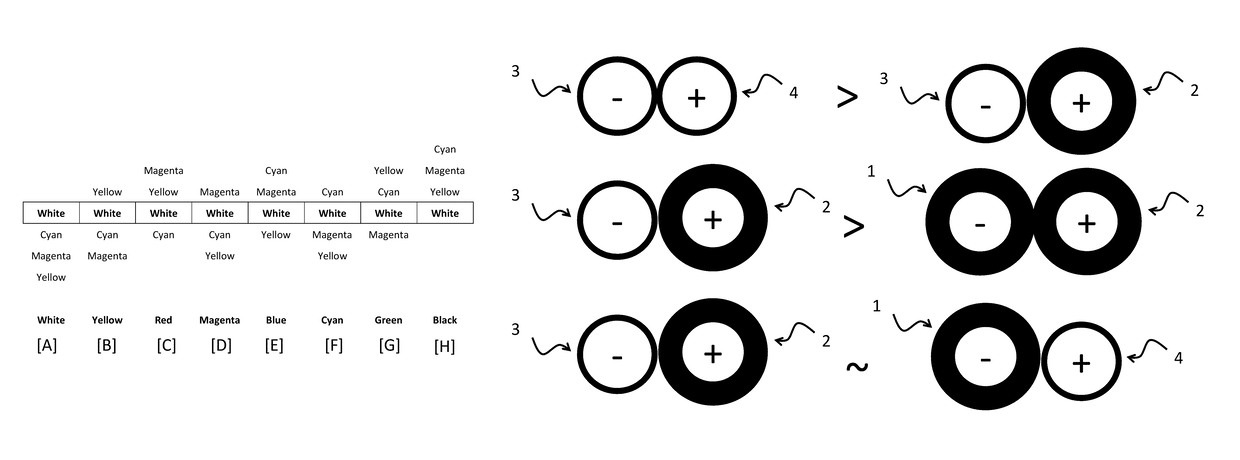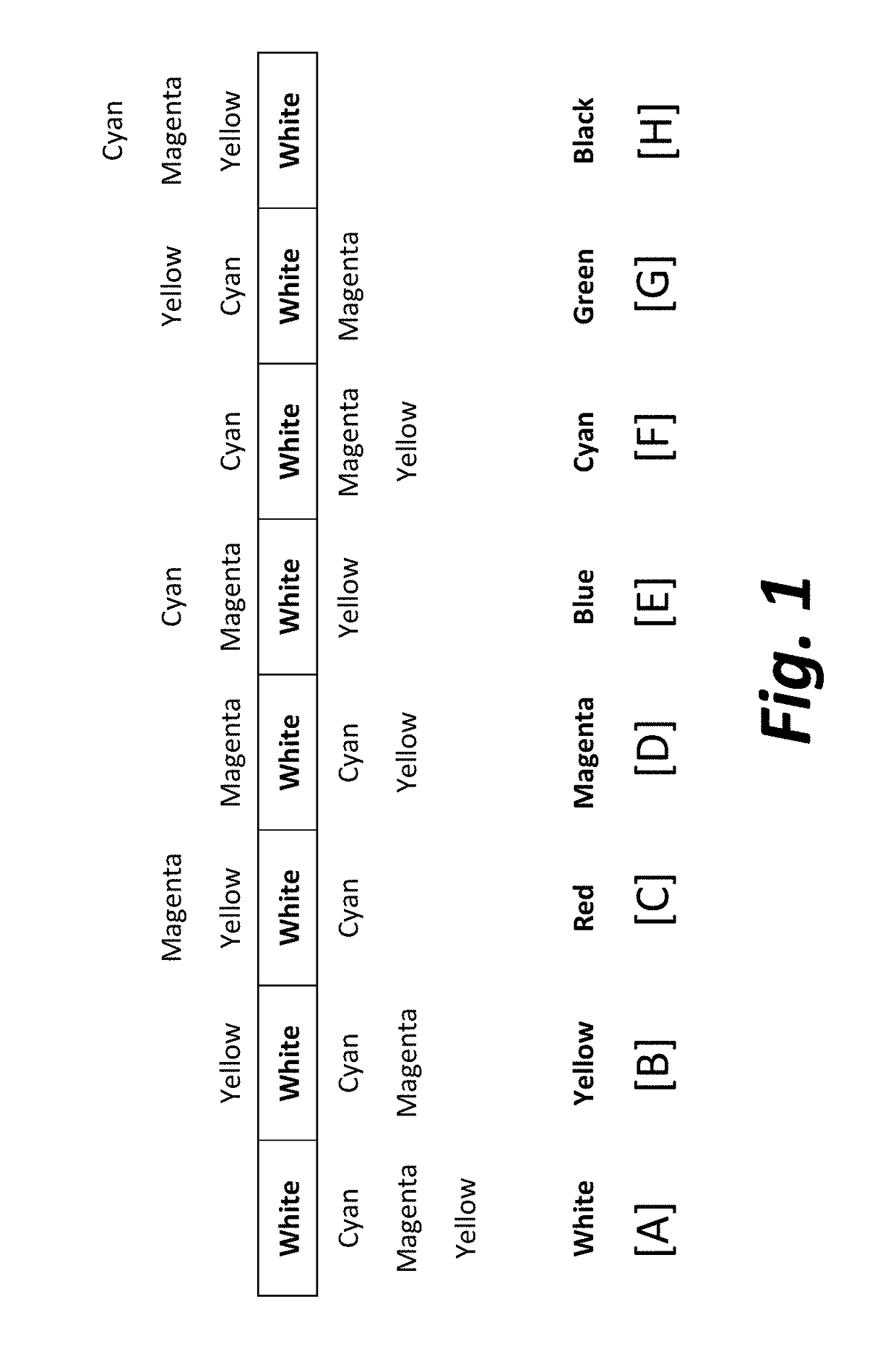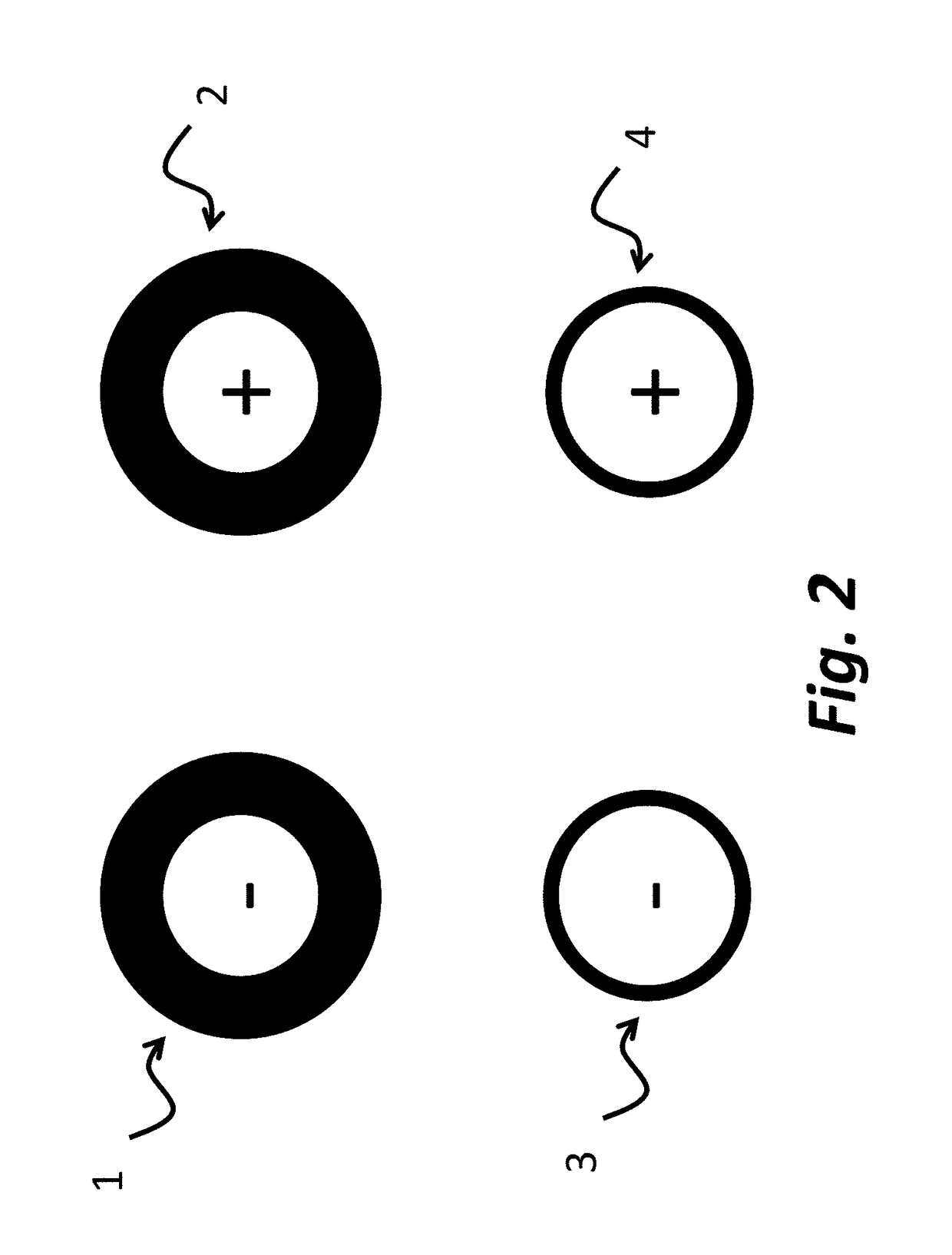Colored electrophoretic displays
a technology of electrophoretic displays and colored dyes, applied in the field of colored electrophoretic displays, can solve the problems of inadequate service life of these displays, unable to meet the needs of customers, and gas-based electrophoretic media are susceptible to the same types of problems, so as to improve the bistability of the display
- Summary
- Abstract
- Description
- Claims
- Application Information
AI Technical Summary
Benefits of technology
Problems solved by technology
Method used
Image
Examples
example 1
Preparation of Yellow Pigment Y1
[0193]A yellow pigment, Novoperm Yellow P-HG (available from Clariant, Basel, Switzerland), (26 g) was combined with Isopar G (70 g) and a solution of Solsperse 19000 (available from Lubrizol Corporation, Wickliffe, Ohio) in Isopar G) and the mixture was dispersed by attriting vigorously with glass beads for 1 hour to afford a yellow pigment dispersion.
example 2
Preparation of Yellow Pigment Y2
[0194]A yellow pigment, Inkjet Yellow 4GC (available from Clariant, Basel, Switzerland), (26 g) was combined with Isopar G (70 g) and a solution of Solsperse 19000 (available from Lubrizol Corporation, Wickliffe, Ohio, 70 g of a 20% w / w solution in Isopar G). The resulting mixture was dispersed by attriting with 250 mL of glass beads for 1 hour at 600 RPM, then filtering through a 200 μm mesh screen to afford a yellow pigment dispersion.
example 3
Preparation of Yellow Pigment Y3
[0195]A yellow pigment, Novoperm Yellow P-M3R (available from Clariant, Basel, Switzerland), (28 g) was combined with Isopar G (70 g) and a solution of Solsperse 19000 (available from Lubrizol Corporation, Wickliffe, Ohio, 70 g of a 20% w / w solution in Isopar G). The resulting mixture was dispersed by attriting with 250 mL of glass beads for 1 hour at 600 RPM, then filtering through a 200 μm mesh screen to afford a yellow pigment dispersion.
PUM
| Property | Measurement | Unit |
|---|---|---|
| volume fraction | aaaaa | aaaaa |
| volume fraction | aaaaa | aaaaa |
| thickness | aaaaa | aaaaa |
Abstract
Description
Claims
Application Information
 Login to View More
Login to View More - R&D
- Intellectual Property
- Life Sciences
- Materials
- Tech Scout
- Unparalleled Data Quality
- Higher Quality Content
- 60% Fewer Hallucinations
Browse by: Latest US Patents, China's latest patents, Technical Efficacy Thesaurus, Application Domain, Technology Topic, Popular Technical Reports.
© 2025 PatSnap. All rights reserved.Legal|Privacy policy|Modern Slavery Act Transparency Statement|Sitemap|About US| Contact US: help@patsnap.com



